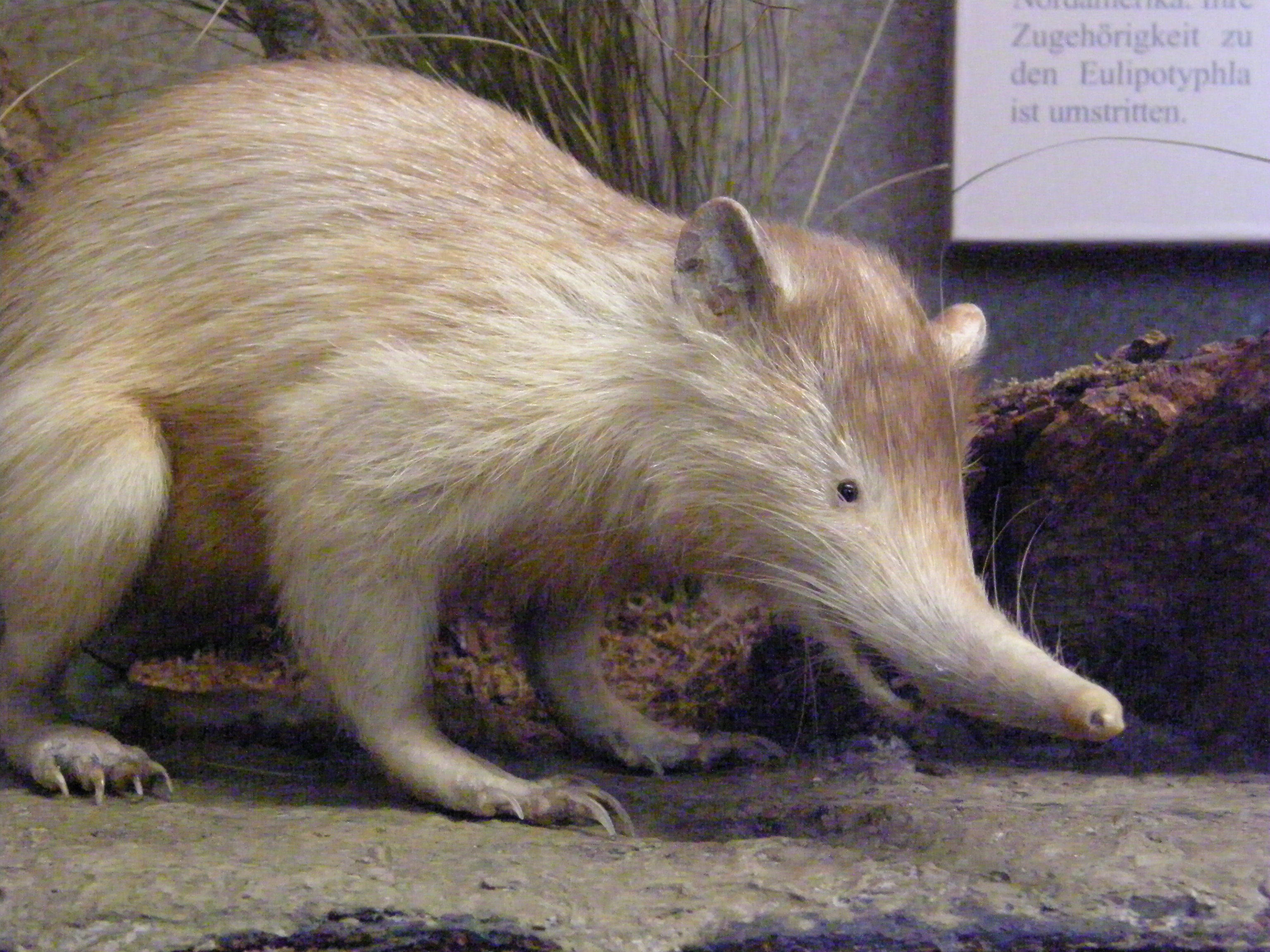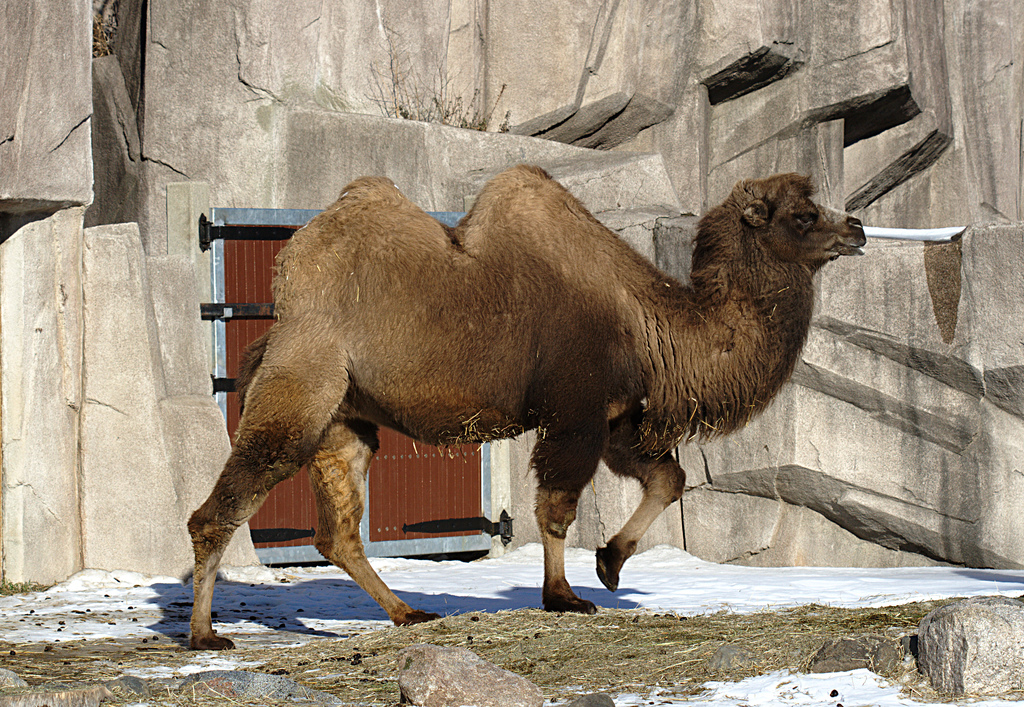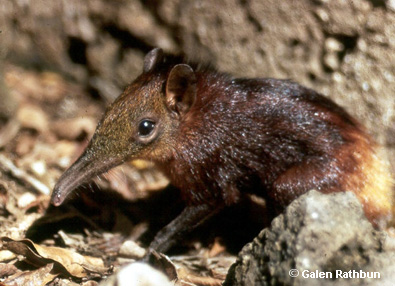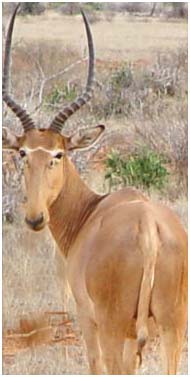1.Slender Loris
The slender loris, Loris tardigradus is classified as Endangered (EN A2cd+4cd) on the IUCN Red List 2004. The grey slender loris, Loris lydekkerianus is classified as Near Threatened (NT) on the IUCN Red List 2004. Two subspecies of slender loris, Loris tardigradus exist.
 The most distinguishing characteristics of the slender lorises are their very long, slender arms and legs, which give these species their names. They usually have a grey or reddish coat, although this varies according to subspecies, and the fur is soft, thick and woolly. Slender lorises do not have tails and move on all fours climbing or walking along branches. They do not have truly opposable thumbs and are only able to grasp things like food or branches with the whole hand, though they do have an extremely powerful grip. The eyes are large and round and the prominent ears are thin, rounded and naked at the edges. There is much confusion over slender loris classification.
The most distinguishing characteristics of the slender lorises are their very long, slender arms and legs, which give these species their names. They usually have a grey or reddish coat, although this varies according to subspecies, and the fur is soft, thick and woolly. Slender lorises do not have tails and move on all fours climbing or walking along branches. They do not have truly opposable thumbs and are only able to grasp things like food or branches with the whole hand, though they do have an extremely powerful grip. The eyes are large and round and the prominent ears are thin, rounded and naked at the edges. There is much confusion over slender loris classification.It is/was a freshwater dolphin found only in the Yangtze Riverin China. Nicknamed "Goddess of the Yangtze" in China, the dolphin was also called Chinese River Dolphin, Yangtze River Dolphin, Whitefin Dolphin and Yangtze Dolphin.
According to Chinese legend, this graceful freshwater dolphin is the reincarnation of a drowned princessThe 2007 IUCN Red List classifies the Baiji as extinct. The Baiji population declined drastically in recent decades as China industrialized and made heavy use of the river for fishing, transportation, and hydroelectricity.
The baiji is a graceful freshwater dolphin, characterised by a very long, slightly upturned beak and low triangular dorsal fin. Like other river dolphins, it has little need for vision in the muddy waters it inhabits, and as a result has tiny, barely functional eyes. It is pale blue-grey in colour with a white underside. The female is generally larger than the male.
3. Attenborough's long-beaked echidna
Recently classified as three separate species, long-beaked echidnas belong to an ancient clade of egg-laying mammals that includes the platypus of Australia. They are easily distinguished from short-beaked echidnas by their long snouts, which account for two-thirds of the length of the head. Despite laws designed to protect these species, they are in decline in areas accessible to humans. Echidnas have lost much of their forest habitat to logging, mining and farming, and are regarded as highly prized game animals by local people. Size: Head and body length: 450-775 mm and Weight: 5-10 kg.
The most distinguishing feature of long-beaked echidnas is their long snouts, which curve downwards and account for two-thirds of the length of the head. They have no teeth; instead their tongues are covered in spikes (teeth-like projections), which are very effective in hooking prey and drawing it into the mouth. They have compact, muscular bodies, with strong limbs and claws for digging. Their back and sides are covered with spines, which vary in colour from white through to dark grey or black. The body is also covered in brownish-black hairs, which sometimes hide the spines. Males are larger than females and have spurs on the inside of the hind limbs, near the foot.
Recently classified as three separate species, long-beaked echidnas belong to an ancient clade of egg-laying mammals that includes the platypus of Australia. They are easily distinguished from short-beaked echidnas by their long snouts, which account for two-thirds of the length of the head. Despite laws designed to protect these species, they are in decline in areas accessible to humans. Echidnas have lost much of their forest habitat to logging, mining and farming, and are regarded as highly prized game animals by local people. Size: Head and body length: 450-775 mm and Weight: 5-10 kg.
The most distinguishing feature of long-beaked echidnas is their long snouts, which curve downwards and account for two-thirds of the length of the head. They have no teeth; instead their tongues are covered in spikes (teeth-like projections), which are very effective in hooking prey and drawing it into the mouth. They have compact, muscular bodies, with strong limbs and claws for digging. Their back and sides are covered with spines, which vary in colour from white through to dark grey or black. The body is also covered in brownish-black hairs, which sometimes hide the spines. Males are larger than females and have spurs on the inside of the hind limbs, near the foot.
4. Hispaniolan solenodon
It weighs between 0.6 and 1.0 kg, and is 28 to 33 cm long (the tail measures an extra 25 cm). It has brownish-red fur on most of its body, the underside being a lighter shade. The tail, legs, snout and eartips are hairless. The forelegs are noticeably more developed than the hind ones, but all have strong claws useful for digging. The head is very big in relation to its body, and it has a long rostrum with tiny eyes and ears, partially hidden by the body fur.
5. Bactrian Camel The Bacterian camel (Camelus bactrianus) is a large even-toed ungulate native to the steppesof north eastern Asia. It is one of the two surviving species of camel. The Bactrian Camel has two humps on its back, in contrast to the single-humped Dromedary Camel. Nearly all of the estimated 1.4 million Bactrian Camels alive today are domesticated, but in October 2002 the estimated 950 remaining in the wild in northwest China and Mongolia were placed on the critically endangered species list.
6.Pygmy Hipopotamus
6.Pygmy Hipopotamus
The pygmy hippopotamus (Choeropsis liberiensis or Hexaprotodon liberiensis) is a large mammal native to the forests and swamps of western Africa (the scientific species classification means "of Liberia", as this is where the vast majority live). The pygmy hippo is reclusive and nocturnal. It is one of only two extant species in the Hippopotamidae family, the other being its much larger cousin the common hippopotamus.
The pygmy hippopotamus displays many terrestrial adaptations, but like its larger cousin, it is semi-aquatic and relies on proximity to water to keep its skin moisturized and its body temperature cool. Behaviors such as mating and giving birth may occur in water or on land. The pygmy hippo is herbivorous, feeding on whatever ferns, broad-leaved plants, grasses and fruits it finds in the forests.
The pygmy hippopotamus displays many terrestrial adaptations, but like its larger cousin, it is semi-aquatic and relies on proximity to water to keep its skin moisturized and its body temperature cool. Behaviors such as mating and giving birth may occur in water or on land. The pygmy hippo is herbivorous, feeding on whatever ferns, broad-leaved plants, grasses and fruits it finds in the forests.
7. Long eared jerboa
The Long-eared Jerboa, Euchoreutes naso, is anocturnal mouse-like rodent with a long tail, long hind legs for jumping, and exceptionally large ears. It is distinct enough that authorities consider it to be the only member of both its genus, Euchoreutes, and subfamily, Euchoreutinae.
It has been reported in China and in ten localities in desert habitats of Trans Altai Govi Desert and the Gobi Desert in Mongolia. A large part of the species is believed to occur in Mongolia within protected areas. Very little is known about the species.
The Long-eared Jerboa, Euchoreutes naso, is anocturnal mouse-like rodent with a long tail, long hind legs for jumping, and exceptionally large ears. It is distinct enough that authorities consider it to be the only member of both its genus, Euchoreutes, and subfamily, Euchoreutinae.
It has been reported in China and in ten localities in desert habitats of Trans Altai Govi Desert and the Gobi Desert in Mongolia. A large part of the species is believed to occur in Mongolia within protected areas. Very little is known about the species.
Kitti's Hog-nosed Bat(Craseonycteris thonglongyai), also known as the bumblebee bat, is about 29–33 millimetres (1.14–1.30 in) in length and 2 grams (0.07 oz) in mass), hence the common name of "bumblebee bat". It is the smallest species of bat and may be the world's smallest mammal. It is a vulnerable species of bat and the only member of the family Craseonycteridae. It occurs in western Thailand and southeast Burma, where it occupies limestone caves along rivers.
Kitti's Hog-nosed Bat is the smallest species of bat and one of the world's smallest mammals. It has a reddish-brown or grey coat, with a distinctive pig-like snout. Colonies range greatly in size, with an average of 100 individuals per cave. The bat feeds during short activity periods in the evening and dawn, foraging around nearby forest areas for insects.
9.Golden Rumped Elephant shrew
The Golden-rumped Elephant Shrew (Rhynchocyon chrysopygus) is the largest of the African elephant shrew family. It is the size of a small rabbit, and is only found in the coastal Arabuko Sokoke National Park north of Mombassa in Kenya.
The Golden-rumped Elephant Shrew lives on the forest floor of evergreen forests, rooting through the leaf litter for 80% of the waking day looking for grasshoppers, beetles, spiders and other small invertebrates.9.Golden Rumped Elephant shrew
The Golden-rumped Elephant Shrew (Rhynchocyon chrysopygus) is the largest of the African elephant shrew family. It is the size of a small rabbit, and is only found in the coastal Arabuko Sokoke National Park north of Mombassa in Kenya.
It is very fast, capable of running at 25km/h. When it detects a predator within its 'flight distance' it will bound off. If, however, the predator is outside its flight distance the elephant shrew will advertise its presence by slapping the leaf litter. As a final precaution each shrew has several nests which it maintains, thus a predator finding a nest will not learn to associate them with potential food.
10. Hirola
The Hirola (Beatragus hunteri, sometimes Damaliscus hunteri also known as Hunter's Hartebeest) is an antelope species found in arid grassy plains in a pocket on the border between Kenya and Somalia. It's the only member of the genus Beatragus.
Hirola are known as the "four-eyed antelope," due to their large preorbital glands. Hirola stand 100 to 125 centmetres at the shoulder and weigh 80 to 118 kilograms. Their coat is a sandy brown colour, greyer in males than females, with a lighter underbelly and a small white strip over the bridge of the nose. The nape of the neck has very thick skin which forms ridges when the ears are pricked up. The horns are lyre shaped and very conspicuously ringed.
Hirola are known as the "four-eyed antelope," due to their large preorbital glands. Hirola stand 100 to 125 centmetres at the shoulder and weigh 80 to 118 kilograms. Their coat is a sandy brown colour, greyer in males than females, with a lighter underbelly and a small white strip over the bridge of the nose. The nape of the neck has very thick skin which forms ridges when the ears are pricked up. The horns are lyre shaped and very conspicuously ringed.











9 comments:
Some good work here. Keep the good work. :)
Good one :)
You have collated some interesting and education facts on your blog.
man ur blog will surely turn out to be a mini encyclopedia one day..I can bet on it..gr8 work dude..Expecting more..:)
gud post !
had knew only 2 of them....
@nethra
u like it thnx :)
@vamsi
i m also waiting for that day buddy :)
keep visting :)
@bilal , @angel, @dan
thnx for ur reviews fnrds :)
nice info yaar
keep posting nice info like this
Gr8 work!!!!!! nice posts
Post a Comment